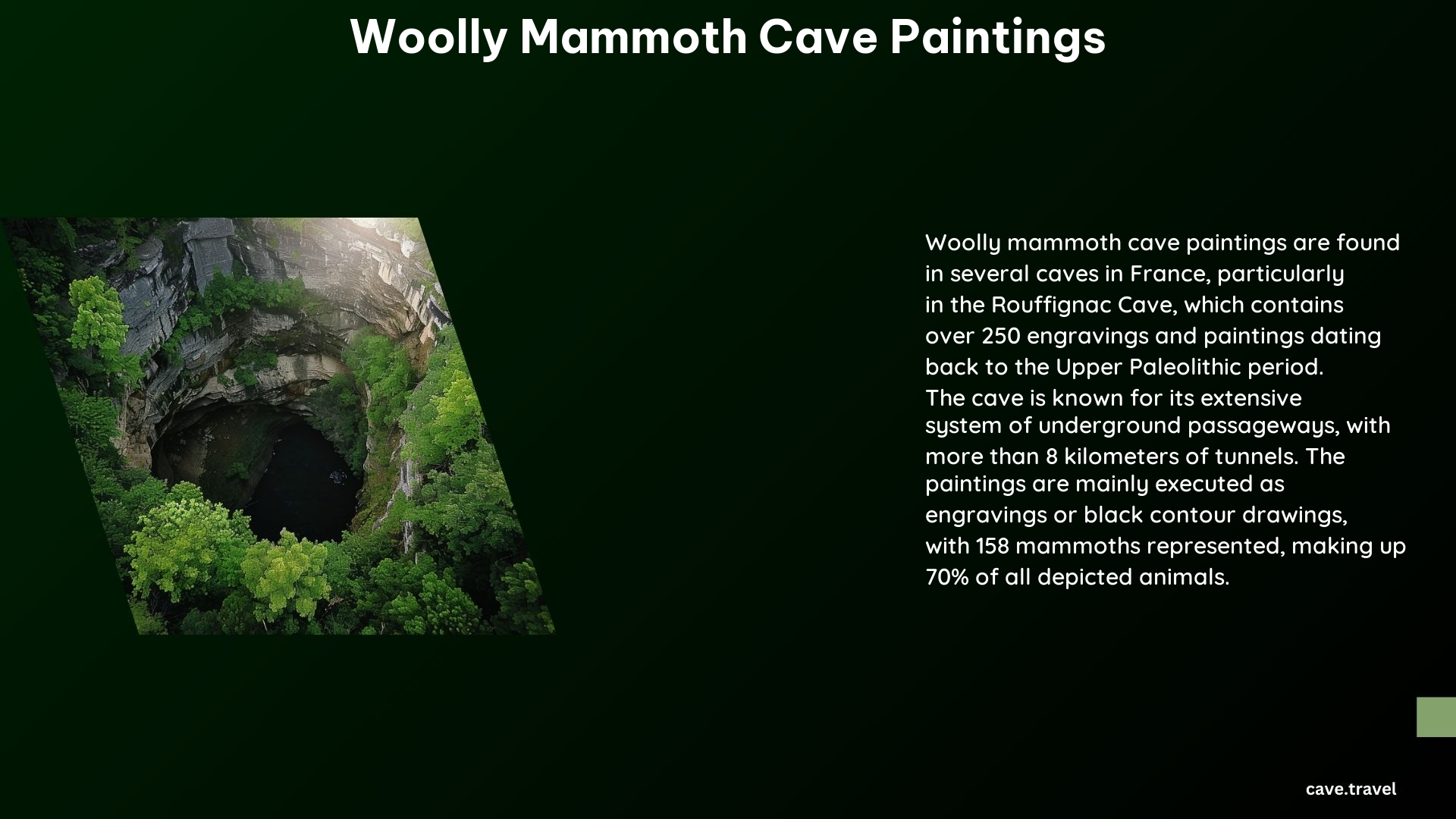The woolly mammoth cave paintings are a remarkable collection of prehistoric artworks found in several caves in France, particularly in the Rouffignac Cave, also known as the Cave of the Hundred Mammoths. These paintings, dating back thousands of years, offer a unique glimpse into the artistic and cultural practices of our ancient ancestors.
Location and Significance

The Rouffignac Cave, located in the Dordogne region of France, is home to over 250 engravings and cave paintings, including numerous depictions of woolly mammoths. This cave system is one of the most extensive in the Périgord region and has been designated as a UNESCO World Heritage site, recognizing its immense historical and cultural significance.
Another renowned cave in southwest France, the Lascaux Cave, is also known for its sophisticated and realistic cave paintings, including those of woolly mammoths. These paintings, dating back nearly 20,000 years, were created by fully formed Homo sapiens, known as Cro-Magnons.
Artistic Techniques

The artists who created these remarkable cave paintings employed a variety of techniques, including engravings, black contour drawings, and polychrome paintings. They utilized materials such as ochre, charcoal, and ground minerals mixed with fat, and used brushes made of hair or frayed twigs to achieve their desired effects.
The paintings are remarkably realistic, with wavy black outlines suggesting the movement of the animals depicted. The artists used a range of pigments and techniques, such as spray painting, to achieve detailed and lifelike representations of the woolly mammoths and other animals.
Importance and Interpretation
The purpose of these cave paintings is still a subject of much debate and speculation. Theories suggest that they might have been created to magically increase the supply of game, to master the animals through art, or simply as a result of the universal human drive to create and express.
Regardless of their exact purpose, the woolly mammoth cave paintings demonstrate a high level of artistic skill and sophistication. The careful planning and execution of these works suggest that they were created by dedicated artists supported by a unified and stable culture.
Visiting the Caves
For those interested in experiencing these prehistoric masterpieces firsthand, the Rouffignac Cave is open to visitors. Visitors can explore the cave via an electric train that takes them about 2 km into the interior, allowing them to witness the extensive cave system and its remarkable artworks.
While the original Lascaux Cave is closed to tourists due to preservation concerns, visitors can still experience the cave paintings through replica caves, such as Lascaux II and Lascaux IV, which offer a vivid Stone Age experience.
Additional Resources
For those who wish to learn more about the woolly mammoth cave paintings, there are several resources available:
- Fine Art America offers a range of mammoth cave paintings for sale, including works by various artists.
- Reddit features discussions and images of woolly mammoth cave paintings, including those from Rouffignac and Chauvet caves.
- Wikipedia provides detailed information on the Rouffignac Cave, including its history, geography, and artistic representations.
- The Bradshaw Foundation offers in-depth information on the Rouffignac Cave, including its prehistoric cave art and UNESCO World Heritage status.
- Rick Steves’ Travel Blog discusses the Lascaux Cave paintings and their significance in the context of prehistoric art and culture.
